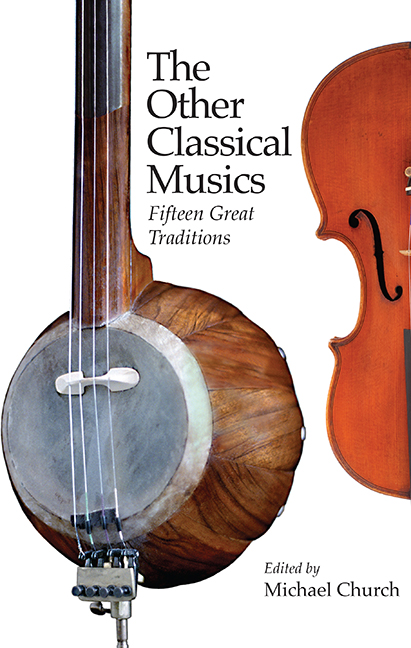Book contents
- Frontmatter
- Dedication
- Contents
- List of Illustrations
- List of Contributors
- Preface and Acknowledgements
- Introduction
- Maps
- 1 Thailand, Laos, Cambodia, Vietnam
- 2 Java
- 3 Japan
- 4 China: The Guqin Zither
- 5 Chinese Opera
- 6 North India
- 7 South India
- 8 Mande Jaliyaa
- 9 North American Jazz
- 10 Europe
- 11 North Africa and the Eastern Mediterranean: Andalusian Music
- 12 The Eastern Arab World
- 13 Turkey
- 14 Iran
- 15 Uzbekistan and Tajikistan
- Notes
- Bibliographies
- Index
Introduction
Published online by Cambridge University Press: 29 May 2021
- Frontmatter
- Dedication
- Contents
- List of Illustrations
- List of Contributors
- Preface and Acknowledgements
- Introduction
- Maps
- 1 Thailand, Laos, Cambodia, Vietnam
- 2 Java
- 3 Japan
- 4 China: The Guqin Zither
- 5 Chinese Opera
- 6 North India
- 7 South India
- 8 Mande Jaliyaa
- 9 North American Jazz
- 10 Europe
- 11 North Africa and the Eastern Mediterranean: Andalusian Music
- 12 The Eastern Arab World
- 13 Turkey
- 14 Iran
- 15 Uzbekistan and Tajikistan
- Notes
- Bibliographies
- Index
Summary
NEVER has the world of music been so open to exploration, nor so rich in paradox. Recording is abolishing history – the music of the past is being subsumed into a voracious and ever-expanding musical present. The shrinking of the globe to a digital village is abolishing geography: everyone can listen to everyone else's music, wherever they happen to be. But in a piquant irony, just as the short-lived ‘world music’ CD boom was whetting people's appetite for new sounds, so those sounds were becoming homogenised out of existence, in response to the demands of the global pop market.
The lament for lost musics is nothing new. The German song-collector Ludolf Parisius gave voice to it nearly two centuries ago: ‘Whoever wishes to collect from the mouth of the people should hurry; folk songs are disappearing one after another.’ It was this urge to preserve and celebrate, often intensified by patriotism, which drove ethnomusicology from the start. Writing in 1905, the Austrian comparative musicologist Erich von Hornbostel expressed a vaulting ambition for the quasi-science he had helped to found: ‘We want to uncover the deepest recesses of the past, and to reveal the full and timeless sweep of the present … We want to encounter everything there is to know about the historical and aesthetic foundations of music.’
Today the existential threat to the world's musics is compared to the threat hanging over its spoken languages, which are dying out so fast that most of the existing six thousand will have gone by the end of this century. And there is indeed a parallel: a music may not be a language, but it will have a grammar, and like spoken languages – even like plants – it needs its own eco-system to thrive. Moreover, its loss is comparable to the loss of a biological species: as the expression of a particular society, and of a particular way of thinking and feeling, each music is a living organism which, if it withers, may not be capable of resuscitation. What tourist in present-day Ibiza would imagine that within living memory its villages echoed at Christmas with male-voice carols growled in a unique throat-trill style?
- Type
- Chapter
- Information
- The Other Classical MusicsFifteen Great Traditions, pp. 1 - 23Publisher: Boydell & BrewerPrint publication year: 2015

